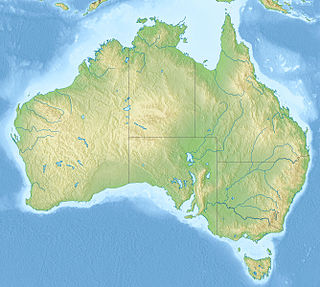 W
WThe Australian environment ranges from virtually pristine Antarctic territory and rainforests to degraded industrial areas of major cities. Forty distinct ecoregions have been identified across the Australian mainland and islands.
 W
WBiofuel is fuel that is produced from organic matter (biomass), including plant materials and animal waste. It is considered a renewable source of energy that can assist in reducing carbon emissions. The two main types of biofuel currently being produced in Australia are biodiesel and bioethanol, used as replacements for diesel and petrol (gasoline) respectively. As of 2017 Australia is a relatively small producer of biofuels, accounting for 0.2% of world bioethanol production and 0.1% of world biodiesel production.
 W
WThe Biosecurity Act 2015 is an Act of the Parliament of Australia which manages biosecurity risks in Australia. It was enacted on 16 June 2015, after the Bill was passed with bipartisan support on 14 May 2015. It covers both agricultural and human medical biosecurity risks, including epidemics and pandemics, and is designed to contain and/or deal with any "diseases and pests that may cause harm to human, animal or plant health or the environment" in Australia.
 W
WBush Blitz is a species discovery program conducting scientific surveys in Australian terrestrial and marine environments to document known and new fungi, plants and animals. The program is a partnership between the Australian Government, BHP Billiton Sustainable Communities and Earthwatch Australia. Bush Blitz is managed through Parks Australia and the Australian Biological Resources Study. The program began in 2010, the International Year of Biodiversity, involving specialist taxonomists, indigenous communities, rangers and landowners, teachers, students and BHP Billiton employees. Bush Blitz funds taxonomy and further research based on material collected during Bush Blitz surveys, specifically targeted to assist in the publication of new species and the resolution of problematic groups collected from surveys.
 W
WDrought in Australia is defined by the Australian Bureau of Meteorology as rainfall over a three-month period being in the lowest decile of what has been recorded for that region in the past. This definition takes into account that drought is a relative term and rainfall deficiencies need to be compared to typical rainfall patterns including seasonal variations. Specifically, drought in Australia is defined in relation to a rainfall deficiency of pastoral leases and is determined by decile analysis applied to a certain area. Note that this definition uses rainfall only because long-term records are widely available across most of Australia. However, it does not take into account other variables that might be important for establishing surface water balance, such as evaporation and condensation.
 W
WEarthCheck, an international tourism advisory group. It is headquartered in Brisbane, Queensland and was developed by the Sustainable Tourism CRC, the world’s largest dedicated research centre specialising in sustainable tourism and research.
 W
WIn Australia and New Zealand, an energy rating label or energy rating is a label affixed to various appliances prior to retail sale, which allows consumers to compare the energy efficiency of product and allows consumers to know how much power a particular model will use to run. They allow consumers to compare the energy consumption of similar products, and factor lifetime running cost into their purchasing decision. The energy rating label is a mandatory comparison label under Australian regulations for store sales but not for products sold online. The label comprises an energy consumption figure for the appliance and a star rating. The energy consumption figure is an estimate of how much energy the appliance will use over a year, based on assumptions about “average usage”.
 W
WThe Geography of Brisbane is characterised by its coastal location in the south eastern corner of the Queensland state of Australia. It is located precisely halfway up the Australian east coast with longitudinal and latitudinal coordinates of 27.5° south and 153° east. The city resides within the Moreton Bay Floodplain, stretching from Caboolture to the north, Beenleigh to the south and as far as Ipswich to the west whilst being bordered by the Pacific Ocean to the east.
 W
WMelbourne, the capital city of Victoria, Australia, is situated on the southeastern fringe of the Australian landmass and in the southern central part of the state. Melbourne covers an urbanised area of approximately 2,453 km²–larger than that of Sydney, Greater London and Mexico City, with population density roughly around 16 people per hectare on average
 W
WThe geography of Sydney is characterised by its coastal location on a basin bordered by the Pacific Ocean to the east, the Blue Mountains to the west, the Hawkesbury River to the north and the Woronora Plateau to the south. Sydney lies on a submergent coastline on the east coast of New South Wales, where the ocean level has risen to flood deep river valleys (rias) carved in the Sydney sandstone. Port Jackson, better known as Sydney Harbour, is one such ria.
 W
WSustainable Tourism Cooperative Research Centre (STCRC), headquartered in Gold Coast, Queensland, was an Australian Cooperative Research Centre established by the Australian Government's Cooperative Research Centres Program to establish a competitive and dynamic sustainable tourism industry in Australia. It ceased to operate on 30 June 2010.